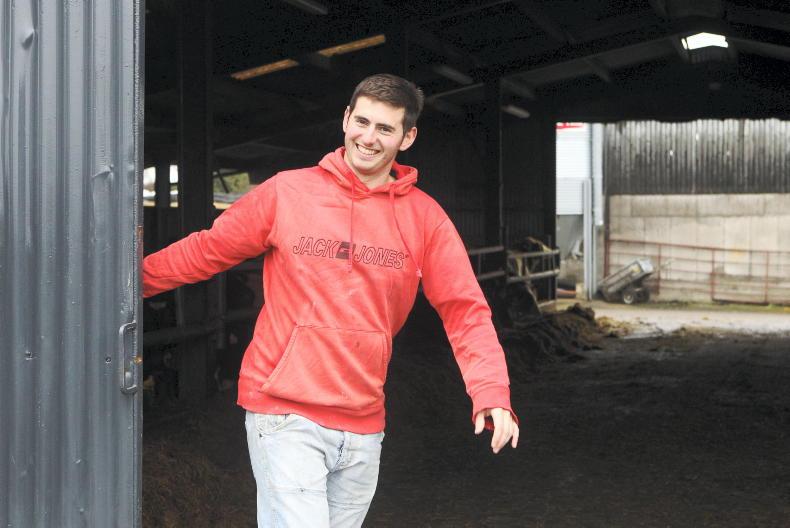Calving is now well and truly under way here in Abbeyleix; so far all is going according to plan. By Monday, our predicted start date, we had already calved down 30 cows and, touch wood, we’ve had no major issues to report. We have an even 50/50 split of heifers and bull calves, which is a good outcome at this stage.
The only real difficulty we encountered so far was one calf presenting backwards. Thankfully, it happened just after morning milking rather than in the dead of night. I spotted the back legs straight away and was able to intervene quickly. It’s always a relief when these things go smoothly, as a delayed response can spell disaster.
Unfortunately, we did lose one heifer calf from a set of twins. The cow wasn’t marked as carrying twins, so when I saw her on the cameras with one calf at 1 am, I assumed she was finished. By the time I realised there was a second one, it was too late. It’s a frustrating loss, especially as it’s our first set of twin heifers in about five years, but that’s farming. You win some, you lose some, and you keep moving forward.
The cows are out day and night at the moment, making the most of the paddocks close to the yard. They’re happy and content, which is always a good sign. If the weather turns wet, I’ll bring them back in after a few hours to avoid poaching. For now I’m not splitting the first few paddocks, since cow numbers are still relatively small, and these paddocks are naturally on the smaller side anyway.
My system is to keep the cows in for three to four days post-calving before letting them out. This gives the cow a bit of extra care in those crucial first days.
I have my fertiliser ordered and it should be delivered this week. If the weather holds dry for a few days, I plan to go with half a bag of urea per acre on the paddocks that didn’t receive slurry. It’s always a balancing act to get the timing right, but with costs being what they are, I want to make sure I’m using inputs efficiently.
We finally got the collecting yard gates hung last week after a frustrating delay. The concrete lorry’s conveyor broke down, which meant we had to push things back, and then there was the wait for the concrete to cure before we could drill for the pillars. It’s always the way – one small issue can have a knock-on effect.
On the cattle side, we sent some of our cull cows to the factory on 10 January. They averaged €1,506, with the top cow making €1,760 and the lowest at €1,340 – a Jersey-cross that was the last of her kind here. We held back seven cows that needed a bit more finishing, but they should be ready to go this week or next. The empty heifers also went, averaging €1,370, which helped soften the blow of them not being in-calf. All in all, I was happy with the prices.
On the sheep front, all of Klara’s ewes have now lambed, and they’re out of the shed. It’s a relief to have that job wrapped up before the bulk of the calving kicks off, and it also frees up more space.
We had our profit monitor meeting with the discussion group last week, and the figures made for far better reading than last year – not that it would have been hard to improve on 2023. Overall, 2024 was a strong year, and the outlook for this year is positive. Our milk price was up 22% to 54c/l, and total costs were down by 20%, with feed costs dropping 34% and fertiliser costs falling 41%.
If feed and fertiliser prices can stay relatively stable and not be artificially inflated, then we should be in a good position. As any dairy farmer knows, these two inputs are the main drivers of total costs, and they have the biggest impact on overall profitability.
For now, though, the focus remains firmly on calving and keeping everything running smoothly. It’s a long road ahead, but when you see healthy calves on the ground and cows settling into lactation, it makes it all worthwhile.






 This is a subscriber-only article
This is a subscriber-only article










SHARING OPTIONS: